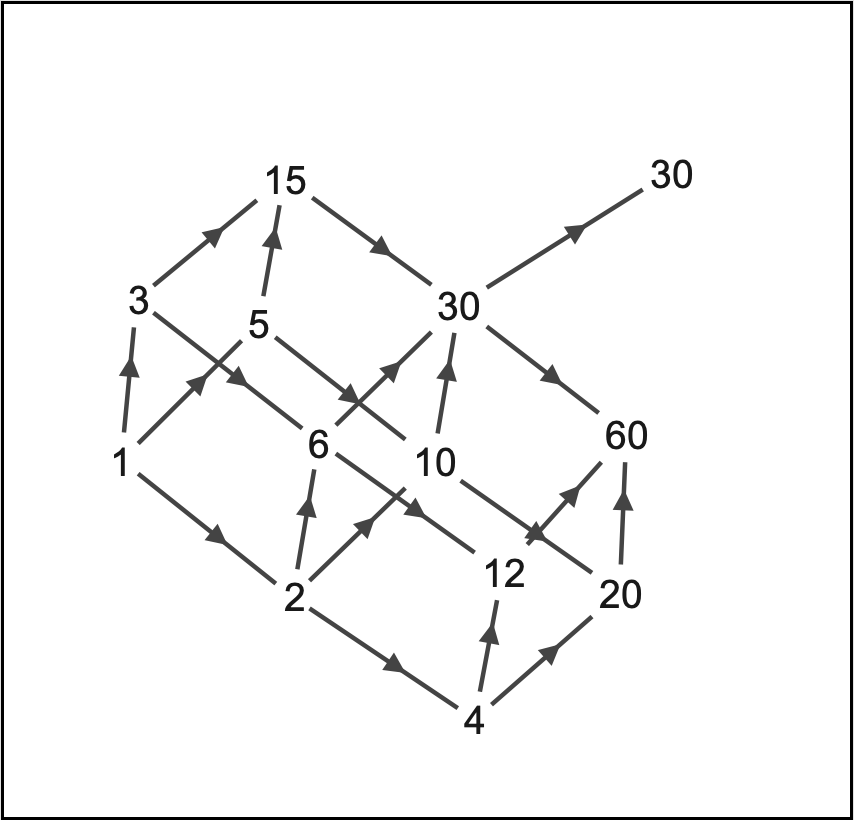May 9 – 13, 2022, 10:00 – 17:00
Location: Notam in Oslo
Price: 5000 kroner for all academic staff in 50% positions or more, free for all others. Course participants who take the course for free must pay a deposit of NOK 300 which is refunded at the start of the course. The course is produced in collaboration with BEK – Bergen Centre for Electronic Arts.
There are many new methods of working with sound, but one thing that is often overlooked is the organization of sound, the composition. In this workshop in computer-aided composition, we will work with bach, an advanced tool for composition in Max. bach is a comprehensive library for real-time computer-aided composition, and can be used in everything from sound design and composition, to interactive installations and research. What distinguishes bach from many similar systems is that you can use it both for working directly with sound and for scores.
The workshop is well suited for both sound-based and score-based practice, and will include a mix of practical work, individual tutoring, and lectures.
The workshop’s teacher is composer and researcher Daniele Ghisi, one of the leading international experts in computer-aided composition and algorithmic composition, and one of the main developers behind bach.
Max from Cycling ’74 will be the main tool during this workshop. Participants should have a good, basic understanding of Max to participate.
bach
bach is a library for real-time computer-aided composition in Max. The library provides Max with a set of tools for representing music and manipulating compositions, through a range of approaches ranging from graphical interaction to programming and sequencing. Unlike many other systems, you can use bach both for working directly with sound and for scores.
The library is oriented towards real-time interaction, and is intended to work easily with other processes and devices controlled by Max, such as sound processing or hardware. This places the software at the intersection of different approaches, and reduces the distance that exists between tools for sound-based, electronic musical practice, and traditional composition.
The new techniques in bach will provide new structures, new musical ideas, and new approaches to working with sound and composition.
bach can be used in areas such as sound design, composition, interactive installations, and musicological research. The workshop will mainly be devoted to presenting the technology and giving the participants the chance to use this through practical sessions, so that they can acquire the skills needed to create for instance compositions, installations, and their own creative tools.
More information about bach: https://www.bachproject.net/
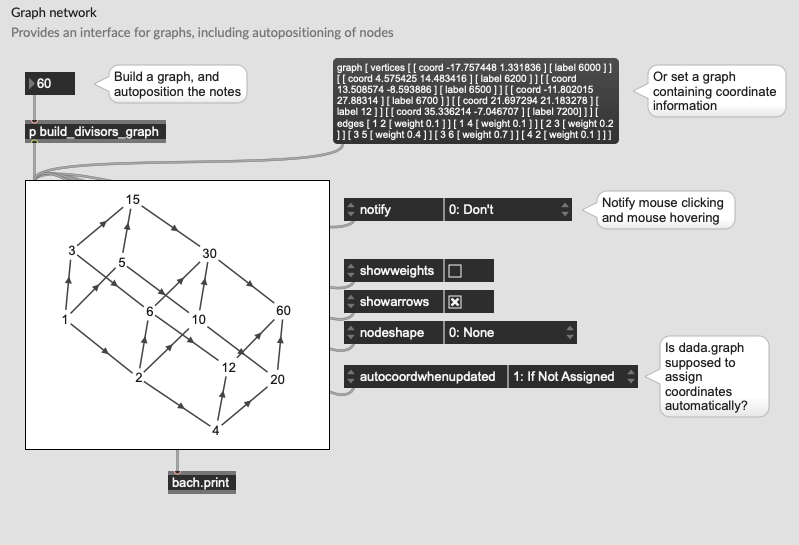
Electronic music
bach can be used to control synthesis and sound processing in Max. One example is the audio processing library FluCoMa, which can be used, for instance, to extract parts from an audio file. You can then use the bach library to extract information from this material and manipulate it further. Read more about this in the article Combining FluCoMa with bach.
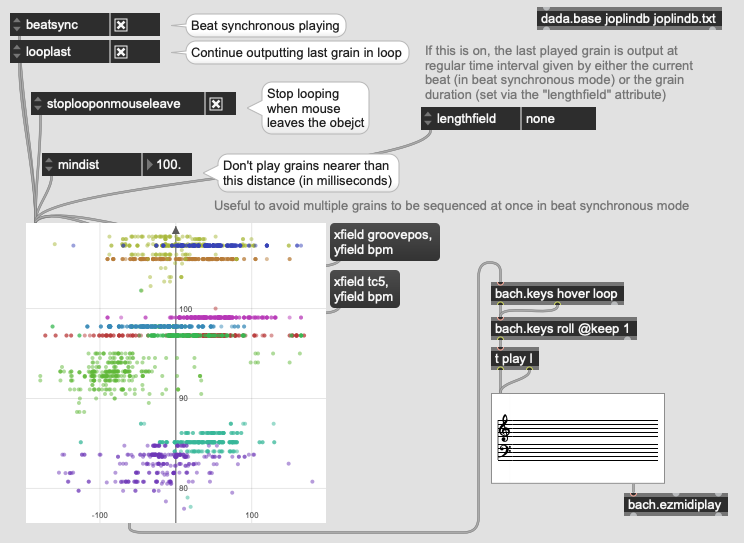
Notation
bach provides the opportunity to work with notation in Max. You can generate, edit, script, modify and play your scores either with mouse and keyboard or through patching. The notation can be exported for further work in other software. The notation can also be easily connected to audio objects in Max.
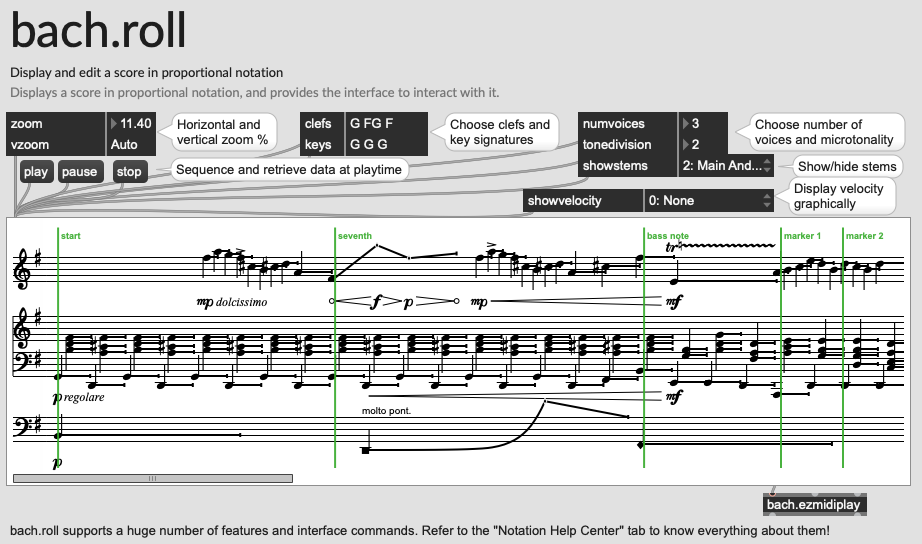
Installations
You can use bach to sequence or generate video content in Jitter, or use algorithmic composition techniques to control and automate external devices such as DMX-controlled lights or physical actuators.
An example of this use of bach is the work My Mother Used to Say (2016) for fans and electromagnetic fields, by Amos Cappuccio. In this work, objects from bach are used to control the various fans, and graphical interfaces control the development of the installation.
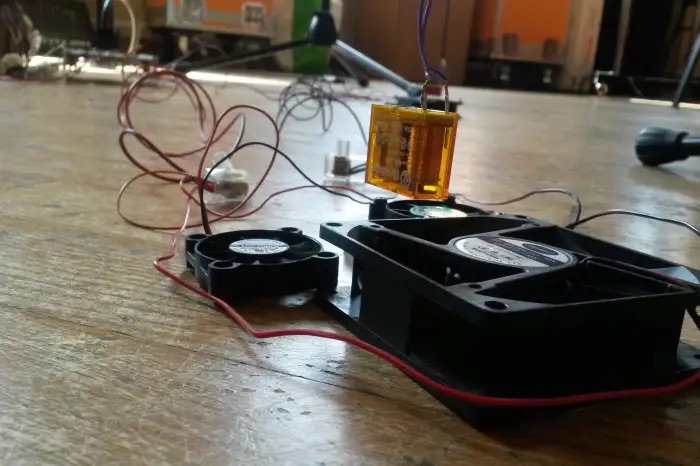
Individual projects
There will be plenty of time to work on your own practical work during the workshop, and there will also be individual guidance for your own projects.
Plans for the workshop
Some examples of topics under the workshop:
– introduction to bach
– basic mechanism of interaction
– import/export from other systems (MIDI, MusicXML, OpenMusic, PWGL…)
– introduction to cage: a simple entry point to bach’s ecosystem
– using bach to control synthesis
– notation
– stochastic processes: random, weighted-random, distributions
– tempo canons, polytemporality
– markov processes
– a feature-based drum machine
– constraint programming in bach
– tools for set theory
Read a detailed plan for the workshop here.
Teacher
The workshop’s teacher is composer and researcher Daniele Ghisi, one of the leading international experts in computer-aided composition and algorithmic composition, and one of the main developers behind bach.
Daniele Ghisi holds a PhD in composition and musical research from Ircam and the Sorbonne University in Paris. Ghisi has been a lecturer, guest composer and guest researcher at the Akademie der Künste in Berlin, Ircam in Paris, the Haute École de Musique in Geneva, the Conservatory of Music in Genoa and CNMAT/University of California Berkeley.
His music is published by Ricordi, and several of the works he has developed in collaboration with video artist Boris Labbé are distributed on the art platform Sedition. He is a co-founder of the /nu/thing-collective.
Practical information
Time: 9 – 13 May 2022, 10:00 – 17:00
Price for all academic employees in 50% positions or more: 5000 kroner. Free for everyone else.
Teacher: Daniele Ghisi
Language: English
Number of places: 12
Location: Notam in Oslo
Registration deadline: 2 May
bach is available for MacOS and Windows, and works for both Intel and M1 Apple Silicon under MacOS. Read more about bach for M1 Apple Silicon here.
The workshop is designed for both sound-based and score-based practice. You do not need to be able to read notation and scores to participate.
Registration
Registration is confirmed by payment via one of these links on Paypal:
bach at Notam 2022, academic staff in 50% positions or more (5000 NOK)
bach at Notam 2022, deposit (300 NOK)
After you have paid, you will receive an email from Paypal. This is your confirmation that you have a place on the course.
We will send you detailed information about start-up and more as the course start approaches.
For questions regarding the workshop, send an e-mail to asbjornf@notam.no
